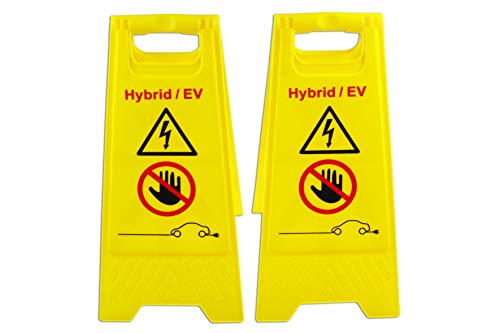Good price indeed, misterbleepy
Tools kit
To find the nearest load, enter a city or address http://fr.chargemap.com/
Green Race 3 is a calculator autonomy for electric cars, available free online http://www.jurassictest.ch/GR/
Peugeot iOn (2010 World Cup) - All about Peugeot electric "Google traduction"
http://automobile.challenges.fr/essais/20100908.LQA3388/peugeot-ion-mondial-2010-tout-savoir-sur-la-peugeot-electrique.html
Peugeot iOn and sister Siamese Citroën C-Zero seem as perfect clones of the Mitsubishi i-MiEV. Nothing could be less true. i-MiEV, the iOn and Japanese are like the camel and dromedary: obviously related, but very different anyway. When the PSA Group announced plans to integrate its range of small electric Japanese, we thought the tight schedule that it was necessary not allow time to make only two big changes. Namely, reverse the position of the steering column and the grille grafted "home." That was counting without the reality of the market and the gulf between the category of " kei cars "minimalist belongs the i-MiEV Japanese the standards of the European mini city. Requirements of comfort, sound and presentation differ significantly. In sum, the Tokyoite not expected the same from his electric car that Parisien. ....
Quieter, better damped faster than the i-MiEV
If our British neighbors were the first to commercialization of the i-MiEV last year, it is only because of their insistence on driving "on the wrong side of the road", as in Japan. Version LHD which will land in the rest of Europe by the end of the year will be very different from the Japanese, unlike French versions released as shield.
Against all odds, in fact, the PSA was not merely a cosmetic treatment. Yet it has its usefulness, since Peugeot claims to be able to reduce aerodynamic drag, despite the transplant mirrors larger, according to the European standard. Initially, the cockpit has gained cachet, with a central console so " piano lacquer "deemed more flattering than the sad imitation of aluminum i-MiEV in Japan. Matter of taste. The i-MiEV European law will also better perceived quality. controls and instrumentation are those of the i-MiEV, with a digital speedometer flanked by display of autonomy and the rate of battery charge Lithium-ion battery. The center hand shows turn the power consumed during acceleration and lift the foot recovered, according to a logical view of the already hybrid Honda. What changes however is the tiny grid selector gearshift. Missing positions "Eco" and "B" for "Braking" of the i-MiEV! Instead, it is the only position "D" for "Drive". " We wanted to simplify the man-machine interface , "explains Philippe Barriac in charge iOn Project since its inception. " The selection of good value depending on the speed and slope do not mind the Japanese client. Point as its European counterpart. way with the iOn, regardless of the profile of the road is the box and computer that selects the correct recovery of kinetic energy. You can not get any easier. " added bonus, this simplified interface helps to extend the autonomy of the iOn 150 km (European standard cycle) or 30% better than the i-MiEV Japanese cycle. What wonder why Mitsubishi was keen to keep the selection triple (D, Eco, B) on the i-MiEV to European destinations. While all cars come out of the same factory in Japan ...
The complete control of the transmission and aerodynamic profiling not explain alone the 30% gain autonomy. The rest is due to the lessons learned from test development. " Our knowledge of the lithium-ion batteries allows us to better understand the limits of their charge and discharge , "says Philippe Barriac. " This is important because if the technology lithium-ion cathodes based on manganese oxides we have chosen is insensitive to the memory effect, she still fears the total discharge. " In other words, it is possible to charge the batteries of the iOn as frequently as desired, but the charge rate must not fall below a minimum value closely monitored by the electronics.
" The computer of the i-MiEV Japanese forbade down to less than 15% charge rate, while we managed to down 5% safe batteries with the iOn , "said P. Barriac. When you know a load rate of 10% on average equivalent to 10 km traveled, we measure the gain. latter is especially significant when the alarm sounds to alert the driver that there are only two "bars" that make up the sixteen gauge. The loading rate is then 15% of what travel 15 km in the city. As this reserve is exhausted, the iOn displays a pictogram "gauge" to warn of the need to recharge, however brief. When turns off the last bar and the requested acceleration can no longer be fully issued, a symbol "turtle" lights and the computer implements an " exit strategy "that limits the available power gradually until complete stop of the vehicle. It cuts one by one to consumers devote little energy left to drive the engine, the way the human body which concentrates blood in vital organs in case of hypothermia. To give you an idea of idea, remember that depending on the temperature, the consumption of air conditioning and electric heating begins reserves batteries from 5 to 45% on average. We would almost sweating in the summer!
Apart from the selector box, the other big change made by PSA for the vehicle structure. The French manufacturer has changed significantly. He also completed six airbags instead of four and a warning unbuckling belt, so that you can target the three rating stars in EuroNCAP future evaluations. A star is less than the Peugeot 107, but as a Dacia Logan positioned above two categories. " We wanted to spare the iOn the image of his car crif ie the safety of its passengers on the altar of lightness. We wanted to do away with the image embedded in the minds of the public that wants the electric car sharing with their construction without a permit quadricycles frail. This design is outdated. "
My Peugeot iOn, Battery 16 kW·h http://www.deficonso.com/V1965



































